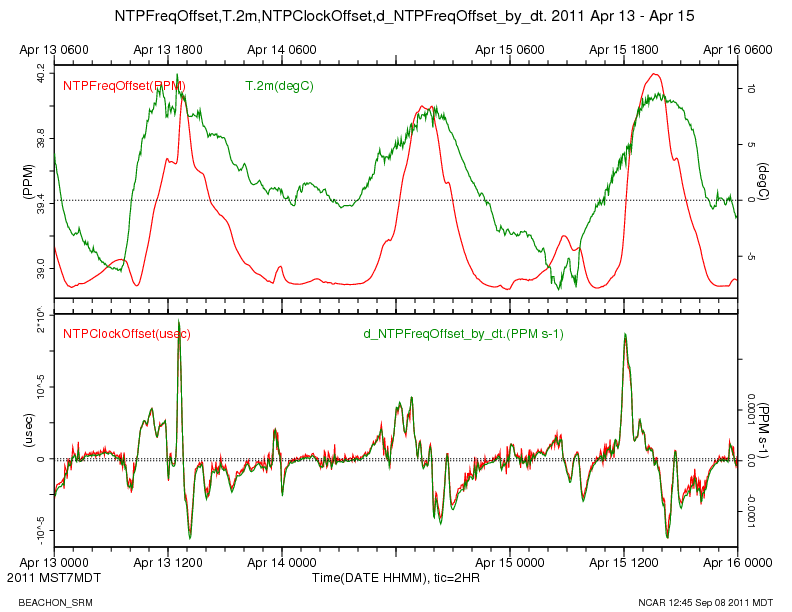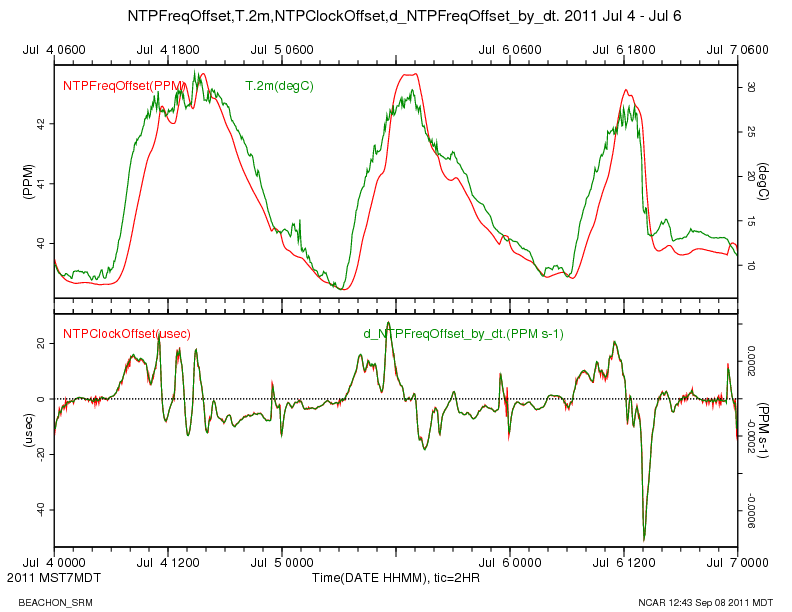...
As expected, the frequency offset shows a temperature dependence in the system clock oscillator. We do not have a measurement of measure the temperature inside the data system box. The nearest temperature measurement is of the ambient air at 2 meters on the tower. The top panel in the plot below shows a time series of the ambient air temperature at 2 meters on the tower, along with the NTPFreqOffset, for a cool 3 day period in April. When It appears that when the ambient air temperatures temperature is below 5 deg C, the system clock oscillator does not show an obvious temperature relation.
The bottom panel shows a close relationship between the NTPClockOffset and the time derivative of NTPFreqOffset, indicating which I believe indicates how NTP adjusts the system clock based on the measured offset.
On a warmer 3 day period in July, where the temperatures were all above 5 degC, the temperature effect on the system clock oscillator is very evident.
...
At these times there is also a little bump in NTPFreqOffset. I can think of two possible causes of this. It could be due to increased interrupt load at these times, causing increased latency in the interrupt function that is called in response to the PPS interrupts. Increased latency in response to PPS interrupts should cause NTP to think that the GPS clock has fallen behind the system clock, but the NTPClockOffset at these times is positive, and the slope of NTPFreqOffset is positive, indicating that NTP thinks the GPS clock is ahead.
Or, the bump could be caused by increased heating of the system clock oscillator, due to increased CPU load during the file transfers. The sign of NTPClockOffset is consistent with a heating effect, as described above. Also, when the ambient air temperature is very cold, the bump is diminished, or has the opposite slope. So my thinking at this point is that the bump is caused by increased oscillator heating.
...
ppstest and ntpq
On the DSM, the ppstest program is helpful for gaining an understanding of the system and GPS clocks. It displays the system clock value when the interrupt function is called at the time of the assertion and the clear of the PPS signal. Do ctrl-C to terminate ppstest.
...

